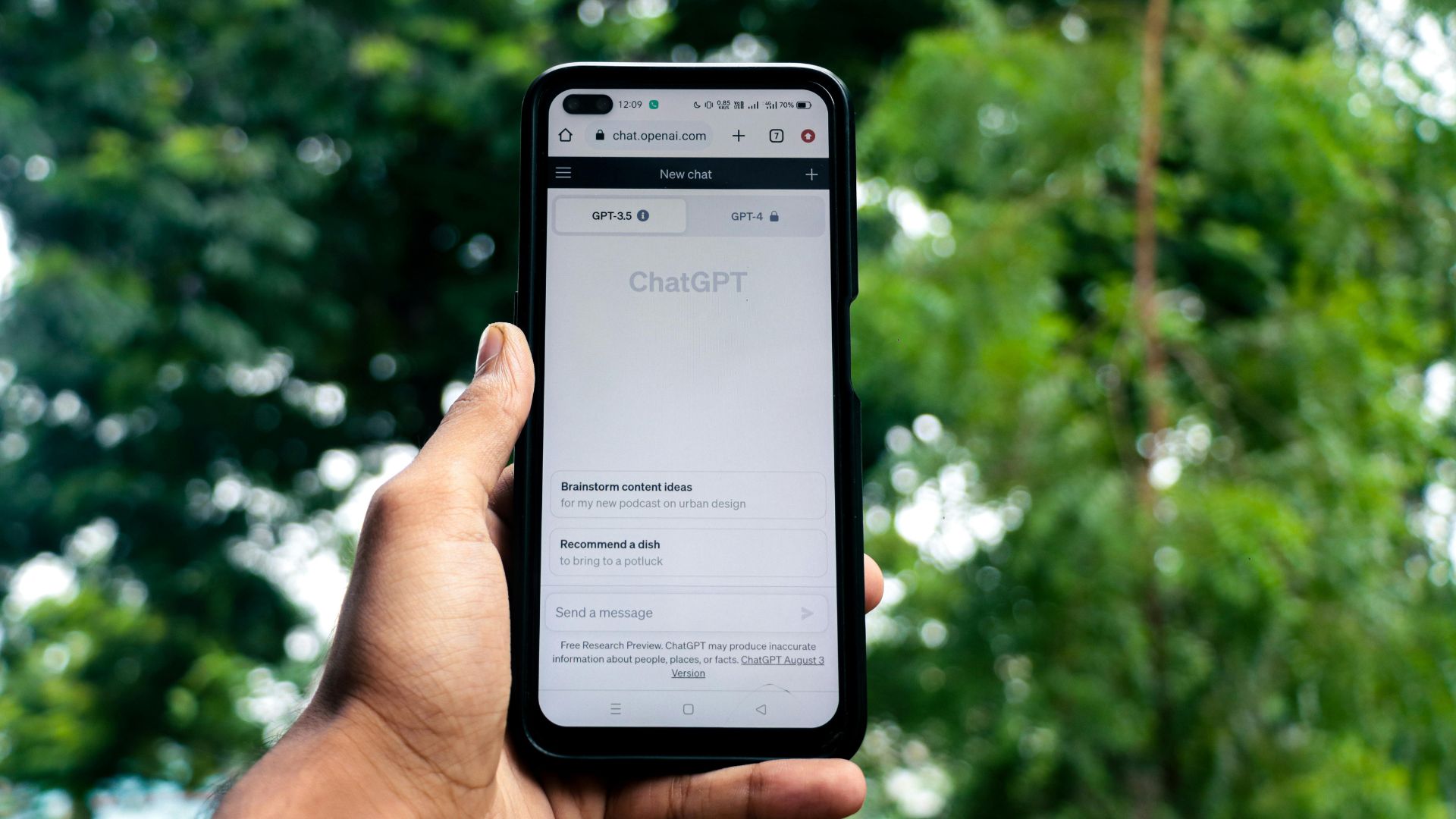
AI-powered search (often called answer engines or AI chatbots) is changing how people find information online. Instead of returning a list of ranked links (the “10 blue links” of classic Google), AI search tools like ChatGPT, Bard/Gemini, Bing Chat, Perplexity, and Claude generate direct answers to user queries. These tools use very large language models (LLMs), which are neural networks trained on vast text data, to interpret questions and craft answers in human-like prose. In essence, they give users an answer upfront, often with citations, so users rarely have to click through to a website. As Search Engine People summarizes:
“AI answer engines… use large language models (LLMs) and generative AI to interpret queries, pull information from massive datasets, and deliver complete answers instantly — no extra clicks needed”.
This is a profound shift from traditional search. Google and other classic search engines still exist, but more people are starting to “ask ChatGPT” or “ask Bard” for answers. In fact, one SEO analyst notes that these AI tools “generate human-like answers to questions in real time” and “give you the answer upfront” instead of links. This makes SEO strategies evolve: businesses must think about how to have their content selected and cited by AI tools, not just ranked on Google.
Key Technologies Behind AI Search
At the core of AI search are large language models (LLMs) – huge neural networks (often based on the Transformer architecture) trained on terabytes of text. LLMs like OpenAI’s GPT, Google’s Gemini/Bard, and Anthropic’s Claude can generate coherent text and answer questions. As Wikipedia explains, “the largest and most capable LLMs are generative pre-trained transformers (GPTs)” and they power chatbots like ChatGPT, Gemini, and Claude. These models excel at language understanding and generation: they learn patterns of language, facts, reasoning, and even grammar during training.
However, a base LLM has one limitation: stale knowledge. Traditional LLMs are trained on a fixed dataset (for example, GPT-4 was trained on data up to early 2023) and then frozen. This means ChatGPT “is unaware of anything that happened beyond its training cutoff dates”. In other words, without special updates or plugins, ChatGPT cannot know about events after its cutoff (e.g. ChatGPT-4o is roughly up-to-date to Oct 2023). To overcome this, AI tools often use Retrieval-Augmented Generation (RAG) or browsing plugins. RAG is a technique where the AI gathers relevant information from connected data sources (like search indexes or documents) and uses it to generate a more accurate and context-aware response. In practice, this means the AI can query a search engine or database at runtime, fetch relevant text, and include it in its answer.
Behind the scenes, many AI search systems use semantic (vector) search. Instead of matching exact keywords, they convert text into numerical vectors (embeddings) and match meaning. As OpenAI’s documentation notes, semantic search “finds conceptually similar content — even if the exact terms don’t match”. For example, when you ask a GPT-powered search a question, the system converts your query into a vector and looks up the most relevant vectors (chunks of text) in its database. This allows the AI to pull in contextually related information from multiple sources. In short: the AI query is matched by meaning, not just keywords.
These technologies combine in different ways in various tools. Some systems rely entirely on an LLM’s training (ChatGPT’s default mode), while others integrate live web search (Bing Chat, Claude with web search, Google Bard) or curated databases (Perplexity). All of them, however, focus on generating a single synthesized answer rather than a list of pages. In sum, AI search works by blending LLM text generation with smart retrieval of relevant content.
Major AI Search Tools and How They Work
There are many AI search and answer engines emerging. Here are a few of the biggest, and how they find answers:
- ChatGPT (OpenAI) – A powerful conversational AI built on GPT-4 (and its variants). By default, it uses its trained knowledge base (up to its cutoff date) to answer questions. ChatGPT does not maintain a real-time web index, so without plugins it “rarely” cites sources or uses live data. (Its knowledge cutoff means it “will not know” about anything newer than that date.) However, ChatGPT’s Pro/browsing mode can use internet search APIs (like Bing Search) at runtime. For example, an OpenAI blog explains that ChatGPT (with a browsing plugin) “retrieves relevant information from connected data sources” and uses that to boost answer accuracy. In practice, this means ChatGPT with web access will search the internet behind the scenes and then summarize or quote the results.
- Microsoft Bing Chat / Copilot – Bing’s new chat-based search uses an OpenAI LLM (sometimes called the “Prometheus model”) tuned for web search. It “reviews results from across the web to find and summarize the answer”. Essentially, Bing Chat combines traditional Bing search with GPT-based summarization. Users get conversational answers, but importantly Bing cites its sources: as Microsoft notes, “The new Bing also cites all its sources”, and the Chat UI shows links. In short, Bing Chat is an AI answer engine that ties its answers directly to live web results. It “combines classic results with live AI summaries, sources, and related links,” according to industry analysis.
- Google Bard (Gemini) – Bard (now updated into Google’s Gemini AI) is Google’s conversational answer engine. Google explains that Bard (Gemini) “draws on information from the web to provide fresh, high-quality responses”. In practice, Bard/Gemini uses Google’s own search index and AI model (Gemini) to generate answers. It often blends an AI-generated summary with traditional results: for example, a quick answer box in Google Search might show a Bard summary at the top. As a PureVisibility SEO study notes, Gemini “pulls from Google’s own ecosystem (YouTube, News, SGE)”. In other words, it taps into Google’s vast data. The result is an AI answer that may cite from or link to Google sources when relevant, but also provide a human-like explanation.
- Perplexity AI – Perplexity is explicitly branded an “answer engine.” It leverages an LLM (initially GPT-3.5/GPT-4) plus live search of the web. When you ask Perplexity a question, it immediately runs a web search and then synthesizes the results into a coherent summary. Notably, Perplexity always lists citations for its statements. For example, their output for “best CRM” shows bullet points with each line backed by numbered source links. As one review explains: “Perplexity pulls data from the live web, credits its sources, and delivers concise, cited answers”. In effect, Perplexity presents an AI-generated answer that you can verify via the live links it provides. It favors high-authority sites and up-to-date content, since it is literally crawling them in real-time.
- Claude (Anthropic) – Claude is an AI assistant built by Anthropic. Until recently, it was a pure LLM without direct web access. But as of 2025, Claude “can now search the web” by incorporating a Bing-based search feature. With web search enabled, Claude’s answers become more current and it provides direct citations for facts. Anthropic explains that Claude “delivers relevant sources in a conversational format”. Although Claude itself is not a search engine, it powers AI tools (and agents) that answer queries with or without web data.
- Others – New AI search tools keep appearing. For example, You.com and Brave Search use LLMs to summarize web results, often with citations. Phind is an AI engine aimed at developers. DeepSeek combines proprietary neural search and generative answers. The Brave browser now offers AI summaries alongside normal results. All these examples share the common thread: they mix semantic search with generative language models to provide direct answers, often with linked sources.
In summary, while the details differ, the major AI search tools all integrate language models with retrieval. ChatGPT on its own uses only pre-trained knowledge (rarely citing sources), whereas Bing Chat and Perplexity explicitly fetch live data and cite it. Google’s Gemini/Bard uses Google Search under the hood, and tools like Claude now fetch the web too. The table below highlights these differences:
- ChatGPT (OpenAI): Cites? Rarely. Live Data? No (unless using plugins). Answers come from static training data.
- Perplexity AI: Cites? Yes. Live Data? Yes. Answers are concise summaries of current web content.
- Google Gemini (Bard): Cites? Sometimes. Live Data? YesBlends AI summaries with Google’s search results.
- Bing Chat/Copilot: Cites? Yes. Live Data? YesUses Bing search plus GPT to answer with source links.
- Claude (Anthropic): Cites? Yes (with web search enabled)Live Data? Yes (optional).
Each tool tends to favor clear, factual content. For example, Perplexity and Bing pull “concise, cited answers” from high-authority sites. ChatGPT favors well-written, comprehensive explanations from its training data. Overall, any content that is structured, trustworthy, and directly answers questions will perform best across these systems.
Figure: Sample AI answer from Perplexity. The user asked “best CRM for small business,” and Perplexity returned a bulleted summary of top options with numbered source citations. Each bullet is an AI-generated key point drawn from a cited website. This example shows how an AI search engine compiles multiple sources into one answer, highlighting key facts from each reference.
AI Search vs. Traditional Search
How does AI search differ from the web search most marketers know? The fundamental difference is delivery: traditional search engines show you a ranked list of web pages, leaving it to you to click and read. In contrast, AI answer engines just tell you the answer.
- Output Format: Google shows ten blue links and a snippet for each. AI search shows one (or a few) synthesized responses. For example, instead of ten links about “how to make coffee,” an AI answer might say “To make French press coffee, start by… [explanation]…,” often in full paragraphs or bullet points.
- Click-Through vs Zero-Click: Traditional search relies on clicks to websites. AI answers often result in zero-click: the user’s question is answered right away with no site visits. (This “answer upfront” model can hurt site traffic – studies show many queries now end without any clicks because the answer was given directly)
- Ranking Signals: Google’s algorithm still uses SEO signals (keywords, backlinks, page authority) to rank pages. In contrast, AI tools typically don’t publicly reveal a ranking algorithm. They choose content based on factors like semantic relevance, authority, recency, and clarity. In practice, AI answers come from trusted, topically relevant sources rather than generic keyword matching. For example, a Search Engine Land investigation found Perplexity favors semantically rich, updated content from authoritative domains.
- Citations and Attribution: Google’s answer snippets sometimes show a source link, but mostly you click through. AI engines vary: some (like Perplexity and Bing Chat) list actual source links for facts, while others (such as ChatGPT by default) may paraphrase without quoting. As PureVisibility warns, “Most of these tools don’t link back. They don’t credit you unless your content is trusted, clear, and built for summarization”. In other words, AI search often skips citing your site unless you’re very authoritative or use special techniques.
- User Experience: Traditional search requires the user to sort through results. AI search offers an interactive dialogue: follow-up questions, clarifications, and progressively refined answers. This interactivity means content that anticipates follow-up queries (like including related questions/FAQs) can do better. It also means SEO strategies must adapt to conversational query patterns.
In summary, AI search and SEO have the same goal (matching users with answers) but a different approach. AI search tools “generate summaries from topically relevant, trusted sources rather than ranking pages in a list”. Marketers should think of themselves as answer providers, not just page rankers.
How AI “Ranking” Works (Content Selection)
AI search engines don’t exactly rank pages by PageRank, but they do choose which content to use in an answer. This selection process depends on several factors:
- Content Quality & Depth: AI models favor comprehensive, in-depth answers. A recent analysis of Perplexity shows it uses a strict “L3 reranker” that filters results by quality and topical authority. In practice, that means semantic relevance is crucial: your content should thoroughly cover the topic, not just hit keywords. Low-quality or shallow pages with lacking depth are likely ignored. As Search Engine Land reports, Perplexity’s core ranking signals include semantic richness and engagement.
- Authority & Trust: Authoritative domains get preference. For example, Perplexity has “manual lists of authoritative domains” that get a boost.If your content is linked to or referenced by highly trusted sites (like major publications, research sources, or well-known companies), AI tools are more likely to trust and use it. Even ChatGPT’s limited web-browsing may “skip your site entirely if you’re not a known authority”. Therefore, building brand and domain authority still matters for AI search visibility just as much as it did for classical SEO.
- Recency and Freshness: Many AI answer engines value up-to-date information. Perplexity’s findings show a “time decay” factor meaning that new content and frequent updates keep your answer visible. Bing Chat and Claude explicitly use the latest web data by design, so outdated content may be passed over. (This is one reason Google’s AI Overviews show dated content with publication dates.) To rank in AI search, keep content fresh and regularly updated.
- Structured & Concise Presentation: Unlike human readers, LLMs don’t read text in paragraphs as a human does – they extract the essentials. PureVisibility points out “LLMs don’t ‘read’ – they extract. Concise, structured content gets pulled more often”. In other words, use clear headings, bullet lists, tables, and other formatting so that the AI can easily parse key points. For example, if you answer a question step-by-step in bullet points, an AI answer engine is more likely to copy those bullets into its summary.
- User Engagement Signals: Some AI systems may factor in clicks or engagement as a proxy for quality. The Perplexity research mentioned “new post performance: early clicks determine long-term visibility”. So content that quickly engages readers (even AI tool users) might be ranked higher.
- Entity and Context Clustering: AI models build “knowledge graphs” of related content. Pages that are interconnected (through internal links, co-citation, or topical clusters) tend to reinforce each other. The Perplexity report notes “Memory networks: interlinked content clusters rank better together”. Thus, organizing your site into a well-structured topical hub can improve AI visibility.
In short, the old SEO mantra of “expert, authoritative, and trustworthy” content still holds, but with new twists. AI ranking cares especially about clarity and trustworthiness, and it often skips content that’s vague or unstructured. Your goal is to make your content machine-friendly – easy for an AI to quote or summarize.
Tips for Optimizing Content for AI Search
Understanding AI search mechanics lets you optimize your content strategy. Here are some best practices:
- Answer Questions Clearly: Frame your content as direct answers to user queries. Use natural language and cover the query comprehensively. Include concise summaries or bullet points for key insights. Remember, AI tools prefer content they can easily quote or paraphrase.
- Structure Your Content: Use descriptive headings (H2/H3), lists, tables, and FAQs. Structured data (schema markup) also helps. For example, adding FAQ schema or clear summary boxes will often be picked up by AI summaries. PureVisibility advises that structured metadata still influences how content gets summarized by LLM. Well-labeled headings act like signposts for the AI’s retrieval.
- Incorporate Keywords & Entities Naturally: While AI search is semantic, relevant keywords (and related synonyms) still signal topic relevance. Mention your target keywords naturally, but also include related concepts and entities (people, brands, dates) to give the AI context. Named entities (e.g. companies, technologies, proper nouns) are especially useful; an AI will link answers to known facts if you mention them.
- Emphasize Expertise and Authority: Make sure your content conveys expertise. Include author bios, credentials, citations, and links to credible sources. AI models favor content with “experience, expertise, authority, and trust” (similar to Google’s E-A-T). Use real author names and professional profiles when possible since “AI prefers content from people with credentials”.
- Use Rich Snippets and Graphics: Images, charts, code examples, and rich media can improve AI relevance (some tools analyze images or code too). A clear diagram (like the one above) can be interpreted by vision-augmented AI systems. When relevant, use alt text and captions (AI tools can read image captions too).
- Keep Content Current: Regularly update your articles with the latest data and trends. If an AI tool finds outdated info, it may downgrade your content. For instance, if a new study or product emerges, revise your page. Timeliness can make the difference between being cited or ignored.
- Build Topical Clusters: Interlink related articles and guides. AI ranking rewards comprehensive topic coverage. Having a well-linked content hub (pillar pages, subtopics, FAQ) signals to AI that your site is a trusted resource on that subject.
- Monitor AI Visibility: Try prompting ChatGPT or Perplexity with your target questions to see if your content appears. This “AI visibility audit” can reveal if you’re being cited. If not, adjust your content and metadata accordingly.
These techniques overlap with good SEO, but with an AI twist. For example, content clarity is more important than ever: “Concise, structured content gets pulled more often”. And always remember to clearly state who your brand is. PureVisibility points out that including your brand name and context helps LLMs recognize and credit your content. For instance, instead of writing “We help clients with X,” write “At [Your Company], we help X” to align the company name with the expertise.
Ready to be found by AI search tools? We offer AI search optimization services that restructure your SEO and content specifically for ChatGPT, Bard, and other answer engines. Contact elvys to get an AI visibility audit and ensure your content is among the answers these tools will generate.
Conclusion
AI search engines – from ChatGPT to Google Gemini to Perplexity – work by combining powerful language models with information retrieval. They understand questions, fetch relevant data (from their training or the live web), and synthesize answers. This is different from just ranking pages: AI tools give direct, often zero-click responses. For businesses and marketers, the key takeaway is clear: focus on clear, up-to-date and authoritative content that AI can easily summarize and trust.
By optimizing content structure, staying up-to-date, and building your authority, you can improve the chance your brand is quoted or cited by AI answers. In this new era, SEO isn’t dead – it’s evolving. Now we optimize not just for Google’s algorithm, but for ChatGPT, Bard/Gemini, Perplexity, and many other AI search engines.
Understanding how AI search works is the foundation. Armed with this knowledge, and additional support from our team at elvys, you can adapt your strategy and stay ahead in search – AI-driven or not.
Be the brand AI recommends.
We help you appear more, get cited more, and convert more—from ChatGPT to Gemini.






.svg)

.svg)